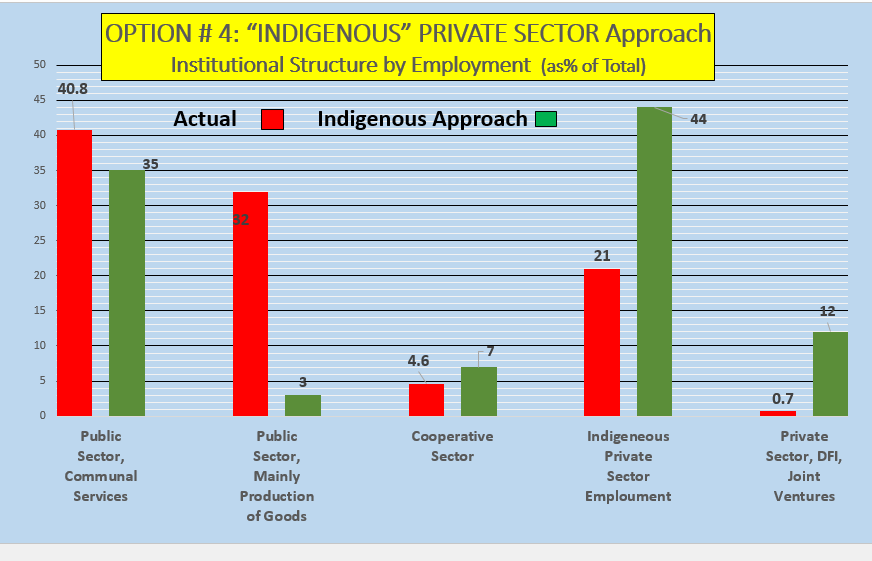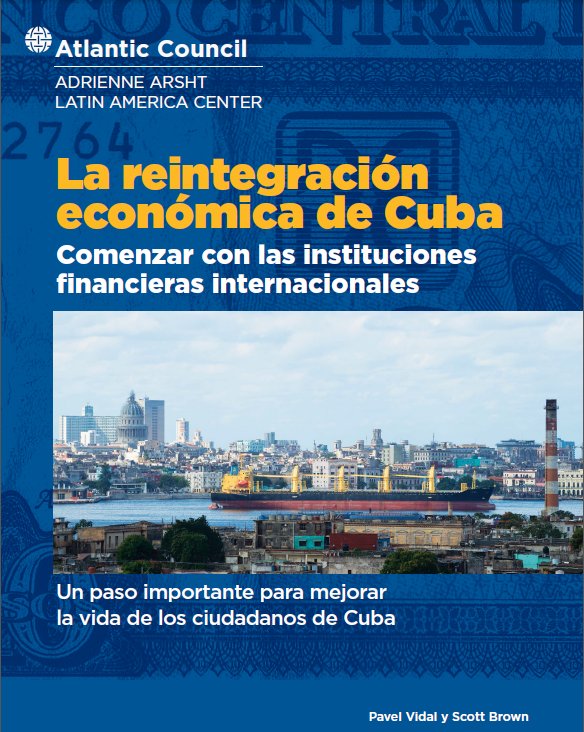John-Paul Rathbone
Financial Times, May 21, 2015
Original here: Lady Salsa in Havana

It is a hot day in central Havana and the doorman at the Television Ballet building is asleep in the heat. But upstairs, Toby Gough, a British impresario, is exhorting nine Cuban dancers to work up a deep sweat. The show they are rehearsing, Lady Salsa, opens in Germany in less than two weeks.
“More fighting spirit please!” Mr Gough urges the troupe after they run through the opening number. “Keep your eyes forward! Engage more, por favor!”
The rough-floored studio has seen better days; the barre is worn, the mud-green paint peeling from the walls, and two plastic fans circulate the stale air. It is an unlikely setting for Mr Gough, a globe-trotting promoter who once brought a swimming elephant to spirit pop star Kylie Minogue away from press photographers after a Sri Lanka charity benefit.
Yet, for more than a decade the resourceful 44-year-old from Sussex has made his base here in Havana, source of dance talent for several touring shows. His troupe and Cuba’s broader dance scene provide a telling viewpoint on the changes on this socialist island.
Mr Gough’s first outing of Lady Salsa, a rousing two-hour journey through Cuban musical history, enjoyed a sellout European tour in 2000. Fifteen years later, he is reviving the show, which follows the life story of Siomara Valdes, a 75-year-old chanteuse who performed at the Tropicana nightclub before the revolution and once taught Nat King Cole the rumba.
Mr Gough’s European backers saw the rebirth of Lady Salsa as a chance to cash in on the giddy new interest in all things Cuban. This has exploded since the December 17 announcement by Barack Obama, US president, that after 50 years of cold war enmity Washington now sought detente with Havana.
“We need a new introduction,” says Mr Gough. “Can we still have: ‘Welcome to Cuba, an island shaped like a crocodile, biting the foot of the United States’? How about ‘nibbling’ or ‘kissing’ instead?” At this, the dancers laugh and blow kisses at their reflections in the studio mirror.
High hopes, slow progress
Gentle irony is a common Cuban reaction to the prospect of US rapprochement. “It’s very easy to go slower,” says a foreign ministry official. US officials are also cautious. “There are many suppositions about how far or fast US executive action can go,” says one. “They often do not take into account the comedy of the various arms of our government.”
Yet the anticipated end of the US trade embargo, which requires an act of Congress, has unleashed a carnival of expectations. Major US companies such as Citi, which lost a fortune in Cuba financing the 1920 sugar price boom-and-bust known as the “Dance of the Millions”, have said they want to return. World leaders and foreign businesses have jostled to mark their territory before the supposed American invasion.
This month alone, Raúl Castro, Cuba’s 83-year-old president, has met Vladimir Putin, Russia’s president; Pope Francis; Matteo Renzi, Italian prime minister; and François Hollande, the first French head of state to visit Havana in a century — although likely not the last socialist visitor to leave unsaid Cuba’s human rights abuses. “How many foreign dignitaries . . . have visited? We have lost count,” wrote dissident journalist Yoani Sánchez in a column on her website, 14ymedio.com. “But their illustrious presence has brought little relief to Cuban daily life.”
That is certainly true of Cuba’s economy. Seven years ago Mr Castro began a tentative reform process, which includes allowing self-employment, the sale of cars and homes, and the mooted unification of Cuba’s myriad currency system. Their purpose is threefold: to boost flagging growth; retain disenchanted youth emigrating abroad; and prepare Cuba should Venezuela’s swelling economic crisis end the estimated $1.5bn of aid that Caracas provides Havana each year.
In theory, the inevitable passing of the so-called historic generation, which led the 1959 revolution, adds further urgency. US actuarial life tables suggest former leader Fidel Castro, 88, has a life expectancy of another four years.
But Mr Castro’s measures have failed to lift growth, which slowed last year to 1 per cent. Nor has a revamped law done much to boost the stock of foreign investment, yet. At just $427m in 2011, according to UN estimates, it would count as small potatoes elsewhere.
“There is more willingness among Cubans to open up than five years ago,” says Lord Hutton, a British peer who led 45 UK businessmen on an April trade visit, one of whom closed a deal — years in the making — to sell seed potatoes to a fried-chips factory. “But there is still a long way to go; patience is required.”
Certainly, for a Financial Times reporter returning to Cuba after a decade of annual visits, there is little change on Havana’s streets, except perhaps a sense of hope. The dismal food has improved thanks to new, private restaurants. To cater to tourists, private homes are being refurbished — often funded by the $2bn a year that Cuban-Americans send their relatives. And Mr Obama’s relaxation of travel restrictions has produced a 20 per cent rise in US visitors this year, Cuban officials say.
About 600,000 came in 2014 and, although that includes mostly Cuban émigrés, it is still far short of the 3m US tourists the International Monetary Fund estimates could travel to Cuba should relations normalise. But the increase has already stretched Havana’s tourist industry, and led to some unfortunate misunderstandings: a few US visitors have taken to pocketing Tropicana glassware as mementoes of their trip.
“They don’t understand that the poor waiters have to pay for the missing items,” rues Yolanda, a Tropicana dancer. Average state wages are $20 a month.
There has also been an explosion of touring shows, and freelance dancers can return from a six-month tour with enough saved to buy an apartment or car. Rakatan, a high-octane extravaganza, played in New York in February. Ballet Revolución, a sinuous meld of ballet and Cuban dance styles, tours Australia in June. Others include Soy de Cuba and Havana Queens.
All draw on talent honed by a dance system organised on Soviet lines. “It’s a machine,” says Aaron Cash, co-choreographer of Ballet Revolución. Like all machines, it can be brutally effective at producing technical excellence. Children are funnelled from an early age into one of four categories; ballet, contemporary dance, folklore or cabaret. One star the system has produced is Carlos Acosta, although his career was only saved from obscurity after he was poached by the English National Ballet.
Internal embargo
Like its Soviet-style economic system, Cuba’s dance machine can also be stifling thanks to what is called the “internal embargo”, an official mindset that would bog Cuba down even if the “external embargo” were lifted tomorrow.
“Mental attitudes are a problem,” admits the foreign ministry official.
Its stunting influence is everywhere: at government offices, where bored officials elevate sulkiness to new levels; at state-run clubs such as the Tropicana, where tourists pay $95 to watch dancers run through a stale set; and at the National Ballet, run with an iron grip for over half a century by Alicia Alonso, 93, who is blind but still choreographing. On tour, critics often comment on her dancers’ “artistic straitjacket”.
The internal embargo certainly exists in big business. “My biggest problem is bureaucratic trauma,” says Idermis González, head of co-ordination at Mariel, an $800m free trade zone on Cuba’s northern coast that is the centrepiece of the government’s drive to attract foreign investment.
It also stymies Mr Castro’s tentative reforms, as seen at Zumaya Gutierrez’s small cafeteria. Ms Gutierrez set up the eatery at her village in Mayabeque province a few years ago. She says that she “loves her country”, and that most of her clients are hungry children. “I love them and sometimes give them a break if they do not have money.”
Yet despite this civic sense, her operation is perforce mainly illegal. Shortages and high prices at state retailers mean food supplies can only be sourced on the black market, where Ms Gutierrez, whose name has been changed, also buys fake sales receipts, at $2 a month, so her accounts pass the tax inspectors. Being able to buy supplies legally, and wholesale, would change everything, she says, her eyes brightening. But that is only possible for state companies and sanctioned co-operatives.
Furthermore, eliminating the black market would end a vital cash source for her neighbours, who sell stolen state goods. “Nobody would then have any money to buy my food,” she says. The result, like much else in Cuba, is an apparent impasse.
“Cuba reminds me of our piecemeal reforms before the fall of the Berlin Wall,” says an eastern European diplomat. “Each one requires another to make it effective, and so on. But Havana has not yet realised that, when it comes to the market, you cannot be a little bit pregnant. Some things just don’t work.”
No velvet revolution
Back at the dance studio, Mr Gough has turned to psychodramatic exercises to develop his dancers’ characters and add narrative heft to the show.
“Many Cubans think they can just rock up and dance away and win applause,” he says. “But TV shows like Britain’s Got Talent or Pop Idol have made audiences more demanding. They take slick performances for granted. Technical mastery is not enough. You have to provide drama, the kind that gives the audience a lesson about life.”
Cuba has long provided the world with drama, be it the supposed decadence of pre-revolutionary Havana, or the socialist austerity that followed. What might happen next is only speculation — and most speculations about Cuba have been wrong in the past.
Mr Obama’s move to relax and ultimately end the embargo aims to swivel the spotlight away from Washington’s historic bullying tactics and on to Cuba’s shortcomings. Still, a sudden velvet revolution-style break looks unlikely. Havana also wants to avoid a chaotic Russian-style transition. But China’s example — perestroika over glasnost — while appealing, is contradicted by the slow pace of the reforms.
“The Cubans are in terra incognita, trying to figure it out,” says Pedro Freyre, a Wall Street lawyer with long Cuban experience. “Some of them are very intelligent, but they also have to operate within key intellectual and practical constraints — like going as fast as possible without losing control.”
Next year’s Communist party Congress will be crucial; the reputedly pragmatic Mr Castro, former head of the armed forces, says he wants to deepen the reforms. He has also said he will step down as president in 2018, although he could remain head of the party, where power ultimately resides.
Meanwhile, an army takeover of the economy’s “commanding heights”, the military-tourist complex, is under way. By some estimates, the army controls 60 per cent of the economy, as at businesses like Gaviota, the island’s largest hotel operator. But even military reformers can suffer from the stolid midriff of official inertia.
This became clear when Mr Castro met Pope Francis in Rome. Afterwards, Mr Castro said that, while he remained communist, he was thinking of returning to the church. International media splashed the extraordinary comment, but not Cuba’s state press — thereby censoring the president himself. “The state press is an insult to militants,” as Mr Castro has said.
Mr Gough, like his dancers, has no interest or time for politics; his own show must go on. Sitting on the studio floor, he revises Lady Salsa’s song list. The curtain will drop after Celia Cruz’s “Yo Viveré”, a cover version of Gloria Gaynor’s “I will Survive”, while the encore is “Adiós”, a poppy salsa number.
This is a neat way to end the entertainment — but also an ambiguous speculation on Cuba’s future. Who will survive, and goodbye to what?
“The most exciting thing about Cuba now,” Mr Freyre says, “is the unknown.”

John-Paul Rathbone
,
























